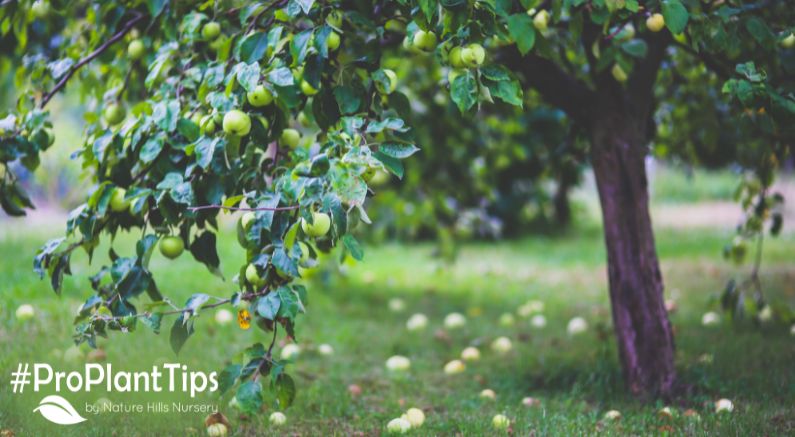Wherever you live, the basic rules for selecting and planting a fruit trees are similar. First and foremost is selecting the right variety for where you live. Many varieties of fruit are widely adaptable like the Santa Rosa Plum. But the question is: will your favorite do well in your yard?
New Varieties
Popular newer varieties like the Honeycrisp Apple or the Flavor King Pluot are the greatest, but they can be a challenge in some locations. The Honeycrisp Apple, for instance, was developed by the University of Minnesota and released in 1974. It is a fine quality apple that is perfectly suited for colder climates. However, it can be a challenge in dry climates with low humidity. In regions with low summer humidity, Honeycrisp can drop its crop with the occasional heat spikes. In drier areas, Gala would be a much better choice. With that said, the Flavor King Pluot is an outstanding plum-like piece of fruit introduced in the 1980’s by Zaiger Hybrids and is limited to areas where apricots do well. If you are unaware of apricots in your area, a selection like the Methley plum would be a better choice. The point is to make sure to pay attention to where the variety you are selecting is recommended.

Drainage

Drainage is the next consideration. The #1 reason people lose fruit trees is due to poor drainage. The problem is most often not over watering, rather suffocation in the root zone brought on by standing water throughout the wintertime. Recovery in the spring is difficult because once spring begins, irrigation begins as well. This does not allow the tree to dry out in the root zone and it struggles. In the Midwest, Northeast and South - where the rainy season extends into the summer months - a poor draining location will often never allow the tree to adapt. Some have no other choice but to plant in a location that drains poorly. In this case, a raised bed planting is recommended. The dimensions for a raised bed need not be any more than 3 x 3 x 12 inches tall and can be done with any material that will last. A simple mound can satisfy the need to elevate, but it needs to be at least 24 inches high by 4 feet wide to ensure that the mound will settle to 2 feet high.
How To Dig The Hole

Digging a hole can be the easiest task of all. The hole need not be any deeper than the depth of the root you are planting. In the case of a #3 gallon tree, the depth would only be 12 inches. The width of the hole should be 3 times the width of the root or container, and dug in a cone-like shape. Place the tree in the center of the hole (cone) cover with soil packing the root as you cover to ensure no air pockets are remaining. In most situations, there is no need to amend the soil except in the most extreme conditions where there is an obvious lack of organic material present. It is to the benefit of the tree to get established in the soil that it will live in as soon as possible. If you are planting in a raised bed whether due to poor drainage or for ornamental reasons, use native soil and don’t worry about digging a hole. Place your tree in the center of your raised bed and fill and pack.
Mulching

Mulching, in the eyes of the experts, has become one off the most important additions required to growing almost anything successfully. This is particularly the case with fruit trees. Mulch provides winter protection to the root, keeps the root cool in the heat of the summer and when regularly replenished, provides nutrients to the tree. This means that the overall expense of mulch begins to pay you back right away with a more consistent growing environment for your tree. Mulching should be done to 3 feet from the trunk after planting. This includes the raised bed when one is used. In colder climates - like those that can occur in Zone 4a through 5b - it is recommended that the mulch cover the outside of the raised bed. Place the mulch within 5 inches of the trunk of the tree and taper it away from the trunk so it does not cover it. Make sure it raises quickly to 3 to 4 inches going out to 3 feet from the newly planted tree.
Irrigation Systems

Irrigation systems for dry climates are an important addition to fruit tree maintenance. A dripline with emitters and a clock allows for the more consistent control of water distribution, making it easier to adjust watering needs throughout the year.
Container Or Bareroot?
Container or bareroot is a choice most often about timing. Bareroot is available from early January until June. The largest variety of fruit trees becomes available in the winter with the delivery of the current crop of fruit trees. Growers send one crop a year of bareroot harvested in fall and delivered throughout the winter and spring. It is now that most container fruit trees are planted up to become available as the bareroot winds down. The containers are typically available throughout the season and some will roll into the next year. Both are great choices, with containers being there anytime you are ready to plant.
Happy Planting!


